The NASA Announcement: A New Form of Life? Maybe!
by Ann Finkbeiner

After several days of hoo-ha brought on by a vague NASA press release about mysterious life forms that will change how we see alien life, the story finally was published in Science and announced by NASA and so, okay, I’ll bite. It turns out that a geomicrobiologist found a bacterium in a California lake full of arsenic, and the bacterium was full of arsenic too. The arsenic atoms were being used by the bug in place of phosphate atoms; and if you’d paid attention back when you were supposed to, you’d know that phosphate atoms are crucial to 1) DNA which is the molecule that makes up genes; and 2) ATP which is the molecule that provides cells’ energy. So: genes and energy, about as basic as you’d want to get.
NASA says life forms based on arsenic are so biochemically different from every other life form on earth that maybe they could exist on other planets. Biochemists say sure, of course, but first let’s find out whether those bugs are actually using the arsenic and not just co-existing with it since they live in an arsenic-filled lake.
Apparently the bugs still like their phosphates and New York Times quotes a kindly biochemist saying they were clinging to every last phosphate “and really living on the edge.” He said he felt sorry for them.
The last time NASA discovered extraterrestrial life, it was bacteria in a meteorite that had come from Mars; and months later, with no press releases, the bacteria turn out to be contamination from the site where the meteorite was found.
Never mind, the arsenical bug is at least another interesting extremophile. For the time being I’m going to grant NASA this one.
Ann Finkbeiner is the coproprietor of The Last Word on Nothing.
The Wonder and Terror (Mostly Terror) of College Football
by Graydon Gordian
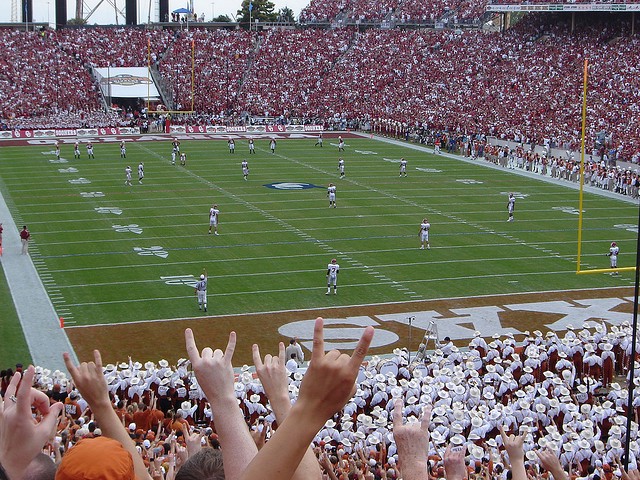
1869 was a banner year for the United States of America. The stench of flickering, saliva-soaked tobacco and here-one-moment-gone-the-next whiskey bottles drifted through the halls of Grant’s White House. Slick city speculators unsuccessfully conspired to exploit the federal government’s precarious finances and corner the gold market. Insufferable party-pooper Wayne Wheeler, who would spend his life stone cold sober and crying like a baby, was born. And the first college football game was played.
Students from Rutgers College and the College of New Jersey, now known as Princeton, met on a field in New Brunswick, New Jersey. They played a game few would recognize today, or even a week later, when the schools played a rematch under different rules in Princeton. Rutgers won the first game by two “runs,” 6–4. The men of Princeton, wily as ever, edited the rules to suit their strengths and won the second game 8–0.
Although both games were surely played with the cast iron courage and Pauline charisma that only takes hold of the male spirit on the battlefield and the gridiron, it’s hard to imagine either group of gentlemen had the audacity or bankrupt sense of humor to claim they were “national champions.”
However, the fiercely irrational, provincial caste system we call college football just wouldn’t be the same without a little controversy. So, over a century later, some guy in Oklahoma named Richard Billingsley went back and manufactured one.
In 1933, Parke H. Davis, a lineman for the Princeton Tigers in the 1880s who, in the grandest traditions of the game, went on to become an ethically dubious coach and a glib, unremarkable historian, set about the task of naming national champions for each season since the sport began. Given that Princeton and Rutgers only played two games, each against the other, and were the only two teams in 1869, Davis decided to name Rutgers and Princeton co-national champions.
It was a pointless and pompous exercise but, if you’re forced to make a call (which Davis wasn’t), an admittedly commonsensical conclusion.
Then, in the mid-1990s, Billingsley, a high school graduate in Southeastern Oklahoma, took a formula he developed in the 1970s for ranking college football teams and began retroactively naming his own national champions. Billingsley’s formula favors the most recent game played and he therefore crowned Princeton, which won the second of the two contests, college football’s first national champion.
The title, shared without contention by two schools that played their best football in the 19th century, was now in dispute.
Billingsley isn’t a well-known figure in college football, but he is a hugely influential one: The ranking system he used to determine the 1896 title is one of the many elements that currently help select which two teams play for the national championship.
It sounds ridiculous to say a rural Oklahoman who lacks either institutional expertise or a background in mathematics developed a formula that plays a crucial role in determining the makeup of the national title game, but when considered against the backdrop of the sport as a whole, it’s par for the course.
College football may have begun in the Northeast but it’s more reminiscent of the sweat-stained, glad-handing, historically agrarian cultures in which the game has thrived. College football is incredibly popular across the United States — basically everywhere except the Northeast — but something about it always strikes me as quintessentially Southern.
Maybe it’s because, since the Associated Press began polling sportswriters in 1936 — a rough marker of college football’s “modern era” — to determine the finest team in the country, 40 of the 74 Division 1-A national champions have been from the 11 states that seceded from the Union or Oklahoma. Maybe it’s because, since the Bowl Championship Series, the current system for determining the national championship, was devised in the late ’90s, only two schools outside those 12 states — Ohio State and USC — have won a title.
But really, it’s the shameless opulence, rigid class structure and self-congratulatory oversight of a system of indentured servitude that reminds me of the Old South.
For the purposes of full disclosure, I’m a benefactor of this system. Having been raised in Austin, I am a proud fan of the University of Texas, a member of college football’s Brahmin caste. I don’t merely root for the Longhorns. During Texas games, I engage in something that resembles a Pentecostal ecstasy, but with less equanimity. It’s the kind of perverse dedication that makes you disown children and dump women of your dreams if they happen to root for a rival.
(My girlfriend once asked me would we be together if she were an Oklahoma fan. I chose not to respond, out of concern that I might be honest.)
However, I am not so blind with devotion as to deny the fact that Texas benefits from the current system as much as if not more than any other school in the country. There are so many structural advantages a school like Texas has it’s hard to know where to begin. I say we start with the money.
The Texas football program is expected to earn $17 million in 2011–12 and $20 million the following year from its portion of the Big 12’s television contracts with ABC/ESPN and Fox. In addition, Texas has made a deal with ESPN to create the Longhorn Network, a cable channel dedicated solely to University of Texas sports. ESPN will push Texas’ annual television revenue above $30 million, an unprecedented amount, while also providing the school $10 million upfront.
Compare that with the undefeated, #3 ranked, Rose Bowl-bound Horned Frogs of Texas Christian University, who are a member of the second-tier Mountain West Conference. TCU has made around $1.3 million annually from their conference’s comparatively paltry 10-year, $120 million television contract. Having grown frustrated with their conference’s financial and competitive handicaps, the Horned Frogs have decided to buck college football’s historical commitment to regionalism and join the Big East conference.
Given how abjectly bad the Big East is at football, the move looks as if a group of aging chief executives, unsteadily piloting obsolete industries, invited an up-and-coming Silicon Valley executive to join their social club. However, the move will be highly lucrative for TCU, providing them more television revenue, a larger slice of BCS revenue and a highly coveted automatic spot in one of the BCS bowls if and when they win the conference.
Along with the millions of fans passively generating revenue on their couch, over 100,000 loyal Texans fill Austin’s Darrel K. Royal Memorial Stadium, the 6th largest football stadium in the country, half a dozen times a year. (The 11 largest are college football, not NFL, stadiums.) Those tickets aren’t cheap.
This year, for the first time in his storied tenure, Head Coach Mack Brown, recipient of a $5 million annual salary (the highest in college football) and the proud owner of two Cavalier King Charles Spaniels, failed to lead Texas to a winning record and, subsequently, a bowl game. No matter. As a member of the Big 12, one of the six conferences that automatically qualify for a spot in one of the five BCS bowl games, Texas will make millions of dollars either way.
The BCS is not an NCAA event, like the men’s basketball tournament. The commissioners of the six major conferences created it, and have organized it in such away that, no matter what happens on the field, they reap the financial benefits. Each of the automatic qualifying conferences receives upwards of $18 million annually, an amount evenly spread around the conference, for having the privilege to send one team to a BCS bowl. If a second team from the conference makes it to a BCS game, an additional $4.5 million is thrown in.
In comparison, all five non-BCS conferences — a grand total of 52 schools — share just 9 percent of the BCS net revenue, which amounted to roughly $9.6 million in 2008–09. If a non-BCS school makes a BCS bowl, such as both Boise State and TCU did last year and TCU, with a 12–0 regular season record, will do this year, their conference makes an additional 9 percent.
As the large and in charge are often horrified to discover, it’s not that difficult to figure out who’s getting screwed and who’s doing the screwing.
Tack on the fact that UT merchandise outsold all other colleges in the country four years in a row (a streak that is certain to end this season), and you’ve got a University of Texas football program that, according to Forbes, hauled in $69 million in profit last year. That’s $21 million more than the second most profitable program in the country, Notre Dame.
That’s big money when all we’re really talking about is a bunch of late stage adolescents committing felonious assault while they toss a ball around.
Those young men, by the way, are the actual victims in all this, far more than the second-tier athletic programs or doltish, devoted consumers such as myself. The millions of dollars in profit could be stomached if, at the very least, these young men were getting an education. For most part, they aren’t. It’s hardly their fault either.
Football teams, just like colleges in general, are made up of both the studious and the academically disinclined. However, most people don’t have domineering father figures like Urban Meyer, Nick Saban or Bob Stoops (who, respectively, make $4 million, $3.9 million and $4.3 million annually) whispering, or rather shouting, in their ear, telling them to get back in that weight room. Or worse, telling them the reason they should get back in that weight room is because they’ve got a chance to go to the NFL, when in fact their coaches know quite well very few college football players have the talent to play professionally.
It’s hard to say you’d rather be studying, or even living a balanced life, when trips to the national championship, and possibly the pros, are on the line. Instead, many college football players pursue half-baked fields of study with the full intention of ignoring their academics and devoting their lives to the game. In return, they get some bad knees, a little light brain damage and a degree in a substanceless subject.
There are lots of athletes, even in the revenue sports, who manage to balance academics and athletics. Their coaches and the talking heads make sure we’re well aware of their existence. That doesn’t excuse the fact that the system encourages athletes to adopt an unsober, shortsighted outlook.
Suddenly the fact that six computerized rankings — one designed by a rural Oklahoman who lacks either institutional expertise or a background in mathematics — and two polls decide which teams go to the national championship game appears to be on the rational side of the spectrum.
So then, why do those of us who should know better love college football? Where, if anywhere, does the sport find redemption? Those answers are complicated, and no doubt merit an essay of their own. But if I had to give at least one reason, I’d say because it’s physical.
That’s the same answer I’d give if asked why I like any sport, whether it be entirely unobjectionable or utterly indefensible. However, there is a particular way college football illuminates human physicality that I’ve come to appreciate.
In the Bible there is a story, in the second chapter of Luke, in which Mary and Joseph accidentally leave Jesus at the Temple in Jerusalem. When they come back to look for him, they find him talking with a group of teachers who are amazed by his knowledge of scripture.
This all happened when Jesus was still young, long before he went pro and started walking on water and rising from the dead, admittedly more impressive feats. However, there is an excitement, a sense of potential that is coupled with his precocious adolescent intellect.
I feel similarly when I watch Cam Newton, Auburn University’s woefully underpaid, physically brilliant quarterback, scramble out of the pocket. As he tucks the ball into the crook of his arm and heads for the line of scrimmage, anxiety eases into optimism. The thought of what he could possibly do not just in the next few moments or even the rest of the game, but over the course of his entire career, which is just beginning, brings wide eyes and a goofy grin to my face.
It’s a tremendous feeling and it grows from an urge to celebrate human potential, not exploit it. In that, I believe, there is some semblance of redemption.
Graydon Gordian lives in Brooklyn with his girlfriend and their two cats, Beesly and Bea Arthur.
Photo by Neil Gandhi, from Flickr.
Tom Brady Talks About Uggs
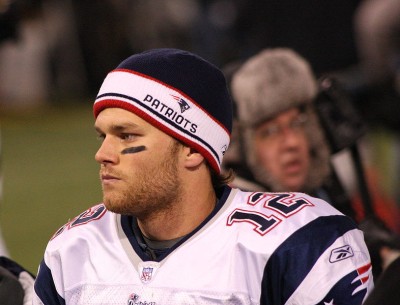
It’s Thursday, and the NFL’s ambitious attempt to rebrand one of everyone’s favorite days continues apace. Time to hop on the golf cart with Robert Kraft and take in a middling-but-undeniably-early-in-the-week football game. Or not, if you’d prefer not — there are always books and any number of other things that don’t involve having to listen to the NFL Network’s Matt Millen doing his Sergeant Slaughter imitation. But the game: the game is between the Philadelphia Eagles and the heartrendingly snakebit Houston Texans. The Eagles have come back to earth somewhat, and the Texans have an odd ability to lose any game in any way, regardless of how well they’d played beforehand, but the Eagles are 9-point favorites, which seemed like a lot — until I remembered that I didn’t really care all that much who won. Then I picked the Eagles and went on with my day. The coin also favors the Eagles in this one. Also, a note on this week’s Yakkin’ About Football.
There won’t be one. This is because Jeff actually has a serious job, and does not — unlike me — always have time to try to figure out what type of sandwich Andy Reid would like the most. (The answer: a tuna melt between two pieces of pound cake, with bechamel sauce) We’ll be back next week with the usual ridiculousness. One thing we would’ve discussed: Tom Brady’s sponsorship of Ugg apparel. He’s taking it seriously, as this combative statement proves.
BRADY: And you see this happen every time someone tries to branch out and try something different, push himself. When Justin Timberlake — close friend, we watch DVR’ed episodes of “Entourage” on Tuesdays, sometimes via Skype but every Tuesday since 2005 — wanted to get into restaurants, people were like, “You’re spreading yourself too thin, concentrate on your acting.” That’s just an example. There are a bunch of others. Bruce Willis and his vodka brand, and this one’s near and dear to me because Bruce and I were co-chairs of this Anti-Death Tax Gala that Roger Goodell hosted last year, but Bruce put his heart and soul into that vodka, and everyone in the media’s like, “No, famous people can’t have vodka brands, but maybe you can have yours as long as you don’t go back to making music.”
I’m maybe off topic, but my point being that Ugg clothing is a product I believe in, it’s a natural fit for me and my brand, and so partnering with them isn’t the sort of thing I really like seeing criticized. And there’s this argument that Uggs, you hear this argument, sometimes: “Ugg boots are just for women, and more specifically they’re just for women in certain parts of Nassau County and that Pamela Geller woman who goes around stopping up the toilets in Middle Eastern restaurants with paper towels because she hates Sharia law so much.” And that sentiment is ignorant, that sentiment is stupid, okay. Because I buy the boots for my offensive lineman every season, and they love them. Logan Mankins wears them during practice. You can’t see it, but Tully Banta-Cain wears this fur-lined Ugg hat that I got him for Secret Santa last year under his helmet when it gets cold. It’s disgusting, by this point, it looks like a giant hairy pancake and smells like microwaved diapers, but Tully swears by it. And these are men. Tell Tully Banta-Cain that men don’t wear Ugg apparel, you know?
But my point is that I’m branching out — because I’m not just a football player, you know, any more than Bruce Willis is just an actor. He’s a bluesman. He loves vodka. He’s a PERSON, okay. And people have interests, and some of us have brands, and those brands need cultivating the same as any other person’s brand does. So I feel like people need to get over it. And anyway, I’m trying to focus on the Jets. That’s job one.
David Roth co-writes the Wall Street Journal’s Daily Fix, contributes to the sports blog Can’t Stop the Bleeding and has his own little website. And he tweets!
What Else Is In the National Portrait Gallery's "Offensive" Gay Show?
by Jessica Roake
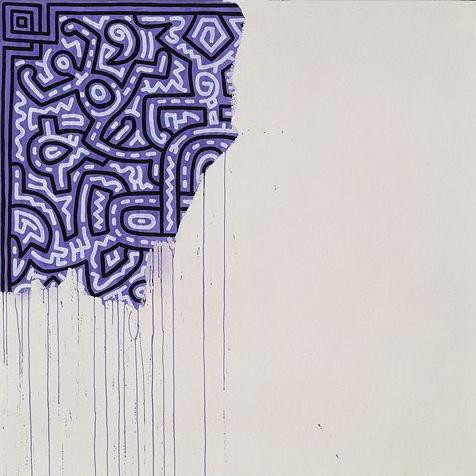
The Catholic League has called some of the art “vile,” Rep. John Boehner has called for investigations into “how taxpayer funds are used” for Smithsonian shows and National Portrait Gallery Director Martin E. Sullivan allowed his boss, Smithsonian Secretary G. Wayne Clough, to pull what was evidently the most “offensive” piece from the show. After this sudden re-ignition of the culture wars, it’s hard to recall the accomplishment, pride and liberal self-congratulation on display at the opening of Hide/Seek a month ago.
The National Portrait Gallery seemed extremely proud of itself at the press preview. Director Sullivan joined board members and the curators for remarks, photo-ops and video. It was worth pointing out, said Sullivan, that Hide/Seek’s galleries are adjacent to a photo exhibition on the Civil Rights movement, and in fact “follow” that movement in the space and in history. The curators, David C. Ward and Jonathan Katz, called attention to the boldness and bravery of the National Portrait Gallery backing the show wholeheartedly during a time when “political winds” might have prevented it. The word brave was bandied about quite a lot.
It was important to note, said Katz, that “this show is not happening in San Francisco, or New York, but in the same city that closed down the Mapplethorpe show 21 years ago” under pressure from conservative groups. The support and freedom the Hide/Seek curators had been granted, and the fact that this show was taking place in the seat of American political power, spoke to how much progress had been made since 1989, when such harm came to the Corcoran (and the city’s) artistic reputation.
This sounds horribly ironic now, for if Hide/Seek had indeed landed in one of those other cities, the criticism of it — especially that of the video “A Fire in My Belly” by David Wojnarowicz — would have been noted and summarily dismissed. The curators were right: the fact that the show “highlights a presence unacknowledged in American culture” and “addresses and historicizes same sex desire and talks about it in ways that haven’t been publicly addressed” is progress. But it also speaks to the shaky support those in power now have shown to the gay community. As soon as any pressure was levied against the Gallery, the Smithsonian Institution buckled completely and immediately, all its “bravery” dissipated, shown up as empty self-congratulation.
In 1999, when the Brooklyn Museum of Art’s Sensation show drew ire, as well as a physical attack on the art by an irate old Catholic and the tantrumy condemnation of Mayor Giuliani (who refused to hand over the museum’s funding until a court intervened), the Museum stood firm and defended the most ‘offensive’ piece, “The Holy Virgin Mary” by Chris Ofili. (The issue at hand was that the portrait included, as a material, elephant dung.) Putting the offensiveness of art on a relative scale in order to defend it is problematic, but in this case it is useful. The piece that has drawn the most outrage at Hide/Seek is Wojnarowicz’s “Fire In My Belly.” The artist, who died of AIDS in 1992, made “Fire in My Belly” as an indictment of a “diseased” society’s refusal to see the reality of the lives and deaths of its gay citizens. In a 30 minute video (which had been edited to 7 minutes for the Gallery), there are 11 seconds of a small crucifix with ants on it. In New York, the painting that people referred to as the “Shit Mary” hung for months; in D.C., a clip of ants on a crucifix is pulled within weeks.

So what’s the difference? The reason Hide/Seek has drawn such outsized condemnation is obvious, but it’s still worth calling out: it’s the gay thing. It’s the gay thing that’s getting the word “sacrilegious” bandied about. It’s the gay thing that’s got Rep. John Boehner talking about a misuse of the American family’s taxpayer funds. Boehner should know that no taxpayer funds go to the actual exhibits at the National Portrait Gallery. (According to the Smithsonian’s report to Congress for the fiscal year 2011, “Almost all of the NPG’s federal budget covers salaries and benefits costs, with a small amount (less than five percent) available for the purchase of artworks.”) So it’s the gay thing that has people questioning the show being up during the “Christmas season.” (Because they usually put up the big “Baby Jesus Holy Holy Portrait show”?)
Would a photograph by Annie Leibovitz of a woman wearing sad clown makeup, baggy pants and a bra while holding her breasts be anything worth commenting on (it’s certainly less sexualized than her usual Vanity Fair shoots) if the subject was not a lesbian? Does a nude David offend as much as a nude painting of Allen Ginsberg? It’s the context here that matters. The curators’ goal was to bring the subtext of certain pieces of classic American portraiture to the surface.
Which means that all of the works on display at Hide/Seek have been shown before; it’s the context that’s new, and it’s the context that makes people so uncomfortable. The curators built the show because they were tired of seeing, as Katz said, “Museum after museum where they don’t mention the partners, the autobiography, the question of gender and sexuality. It’s hiding in plain sight, yet no one has put it together.”
Though they are generating the hysteria, the most haunting rooms of the show are not the most modern, post-liberation works, despite the many standouts. These artists speak not only to the struggles they face because of their sexuality, AIDS and the larger culture, but also to the loves and joys of their lives, and they create art from an out perspective. The works of the late 19th to mid-20th century artists on view at Hide/Seek, however, are powerful precisely because of how much is unsaid. Many of these artists remained closeted for most or all of their lives, the realities of their romantic and sexual lives deemed shameful and pornographic. These works are strong enough on their own to have long ago made it into the canon of great American Art, but in providing the ‘codes’ to visitors, the curators heighten the emotional import and allow people to read the art in new ways. At Hide/Seek a viewer can unpack the densely coded Marsden Hartley painting in remembrance of his dead German lover (a double no-no post-World War I), “Painting No. 47, Berlin”, and the “visual missives” Robert Rauschenberg and Jasper Johns sent to each other, both during and after their relationship. (As an aside, it would be another bit of liberal self-congratulation to claim that this homophobia is purely conservative — but the New York Times obituary mentioned Rauschenberg’s brief marriage, but not his six-year co-habitation with Johns; ditto, in Sontag’s obituary, the long-term partnership of with Annie Liebovitz.)
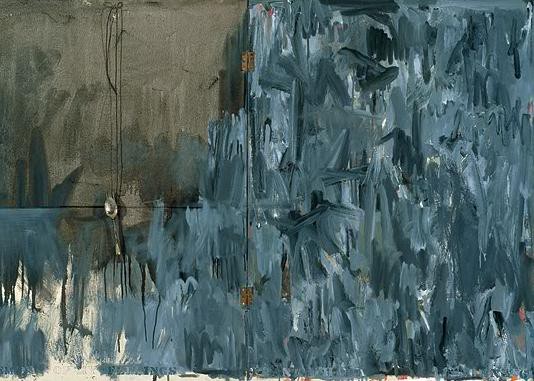
Johns’ response to his break-up with Rauschenberg, for example, is heartbreaking: his iconic flag is here covered in black and grey, the edges barely visible. A fork and spoon — an odd but paired couple — hang together from the once starry part of the flag (the stars have gone out) and the text at the bottom of the flag reads “in memory of my feelings: Frank O’Hara.” Knowing this does not mean that the painting is now relevant where once it was not, but it also, as Ward said at the press preview, deepens the experience by showing that, “yes it’s an exercise in paint, but it has a profound heart beating behind it.”
Conservative art lovers tend to love “American Gothic” by Grant Wood, but they probably don’t want to know about the artist’s homosexuality, or see the mournful starkness of “Arnold Comes of Age” on view in Hide/Seek. In it, a young man stands in the foreground of a Cedar Rapids landscape, a male nude wading into a river far behind him. A lone butterfly (the ‘papillon’ is a coded reference to the term given to gay men in France, where Wood had spent time) flies in front of Arnold’s arm, barely noticeable. All of this subtext is elucidated in the show, which is the problem for Boehner, the Catholic League and, sadly, weak National Portrait Gallery Director Sullivan. For these people, it would have been better if the artists had stayed in the closet, in the shadows, the codes for their art kept only by the small bands of liberal urbanites, away from “American families” and their heterosexual “values.” It would be better if the National Portrait Gallery abridged its mission, which is to tell “the stories of America through the individuals who have shaped U.S culture.” For these critics, poor Arnold will be fine if he just keeps looking out at you, never turning around to look at or enjoy the temptation of the river.
Jessica Roake lives in Washington DC with her husband and son. She’s a regular arts contributor for The Washington Post Express, has a much-neglected blog, and really misses living in New York at times like this.
British PM Banned From Smiths Fandom
David Cameron, stop saying that you like The Smiths, no you don’t. I forbid you to like it.less than a minute ago via Twitter for iPhone
Johnny Marr
Johnny_Marr
All the usual caveats about unverified accounts apply, but this is too good not to share. [Via]
Schadenfreude Tastes Delicious!
“Scientists who study schadenfreude are learning that this secret happiness at another person’s loss has biological underpinnings. The feeling registers in the brain as a distinct form of pleasure, a satisfaction comparable to that of eating a good meal.”
My Catholic Republican Mother Watches "Fire in My Belly"
by Ryan Creed
As noted yesterday, the National Portrait Gallery removed David Wojnarowicz’s video “Fire in My Belly” after denunciations from the Catholic League and incoming Speaker of the House John Boehner. Boehner represents Ohio’s 8th district, an area just north of Cincinnati, where coverage of the art scandal is completely absent in the local press — outcry is at a minimum if it exists at all.
Right now I just happen to be in Fairfield, Ohio, visiting my parents for the holidays. Who better to give some local perspective to liberal urbanites incensed by the seemingly jarring insensitivity and grandstanding of Boehner and the Catholic League than my mother, a 58-year-old devout Catholic and Republican in Ohio’s 8th district? I had her watch the video for the first time and recorded her carefully worded response.
Me: So before we begin, how often do you go to church?
Mom: Four times a week and I distribute Communion once or twice a week.
How many times have you voted for John Boehner?
Every time that he’s run.
[Mom watches video.]
So what are your thoughts on the video?
Obviously it’s very intense. The artist had in his mind the suffering that goes with the person who has AIDS as well as the gay man, I suppose. I wouldn’t have chosen to watch this, but having watched it, I can see the anguish. As a Catholic, I would question the use of Jesus and the crucifix to paralleling his anguish.
Did you think it was offensive?
I find anything offensive that uses a crucifix in a political agenda or any agenda that’s not spiritual.
Do you think the National Gallery should have taken it down?
I don’t know. John Boehner said the tax payers are paying for this…I don’t know. You know, I’m an accountant, not an art critic. I wouldn’t have chosen to see this. People who do know art and understand the details of art might find that to be an artful piece. I can’t judge art.
But you’re not so offended that you’re going to be having nightmares or are now blind?
No, I’m not blind. But I would never have walked into the exhibit if I knew that there was objectionable or pornographic content. I wouldn’t want to see it, nor would I want my family to see it.
Is it clear to you that this is art?
Yes. From my limited knowledge, yes.
Do you think your other people in Fairfield would feel this way?
I think most would feel the same. They would not have looked at or have liked it or gone to see it, but people in the art would have a different perspective.
Why isn’t the local press covering it?
It’s something the local people wouldn’t have any chance of seeing, and that’s probably why the press isn’t covering it.
But if you walked into a gay-themed art exhibit, would you expect to see this?
Would I expect it, no, but if it was there I wouldn’t be surprised about it.
Last question, do you watch “Two and a Half Men”?
I do! I’m embarrassed to say that I think it’s the funniest show on TV!
I’m offended!
Ryan Creed is an editor in New York City who writes a lot about gay stuff and early 90s indie rock.
Why Do You Hate Steve Martin?
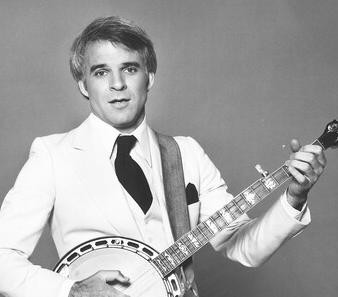
I’m totally baffled by this brouhaha over the Steve Martin-Deborah Solomon discussion at the 92Y? According to the Times and others, it was a horrible nightmare and the audience is all actually getting refunds. But none of these accounts really make any sense or give any idea of what exactly was so horrible? Like this Mediaite account says: “Martin’s new novel is set inside the New York City art world, a world that he became familiar with through the years dating back to his time exploring galleries, museums, and libraries while on tour in different American cities. To Martin’s credit, he seems to know a good deal about the subject — he can even talk at length about the differences between the ‘uptown’ scene and the ‘downtown’ scene in New York.” Not to be a snob or anything, but this seems like it was written by Borat. Steve Martin has been a major, major collector for ages, and kind of a weird one, collecting in weird areas across modern and pre-modern art; and I mean, he dated Cindy Sherman!; and also, you live in New York City, are you yourself unable to talk about current differences between uptown and downtown art? Anyway, maybe don’t go to an event held by an art-world person in support of his book about the art world if hearing about it is apparently so bloody excruciating! (Update: This is a more helpful account, which puts the blame heavily on Solomon for largely rendering a book report.)
